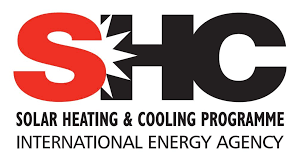
Solar Heating and Cooling Programme – TASK 63
Solar Neighborhood Planning – International Energy Agency
Overview
Solar neighborhoods are increasingly important to achieve net zero energy districts and low carbon cities. The planning of neighborhoods that address the generation of renewable energy on site will enable solar thermal technologies and photovoltaics to be implemented or prepared for, as well as creating daylight and sunlight access to achieve healthier urban environments. Solar neighborhoods also create environments which are energy (resource) self-sufficient and resilient to energy price fluctuations or reliance on energy imports – helping future-proof towns and cities.
In this Task, a neighborhood is defined as a group of buildings, a district/precinct. It is a spatially defined, specific geographic area, often including different types of buildings and functions, open space and infrastructure.
A neighborhood can be part of a larger city or a smaller village. It can be part of an urban area, a rural development, or represent an isolated community. Further, it can be connected to a district heating/cooling network or outside such, giving very different boundary condition challenges.
Scope
The scope of the Task includes solar energy issues related to
- New neighborhood development
- Existing neighborhood renovation and development
Duration : September 2019 to October 2023

Past Meetings / Events
- IEA SHC Task 63 – 2nd Task MeetingMarch 10-12, 2020 – Lund University, Lund, Sweden
- Kick-off Meeting Task 63
October 22-24, 2019 – University Savoie Mont-Blanc, Institut National de l’Energie Solaire (INES), Le Bourget du Lac, France

Operating agent :
Dr. Maria Wall
SWEDEN
+46/46/222 9662 fax: +46/46/222 4719
maria.wall@ebd.lth.se